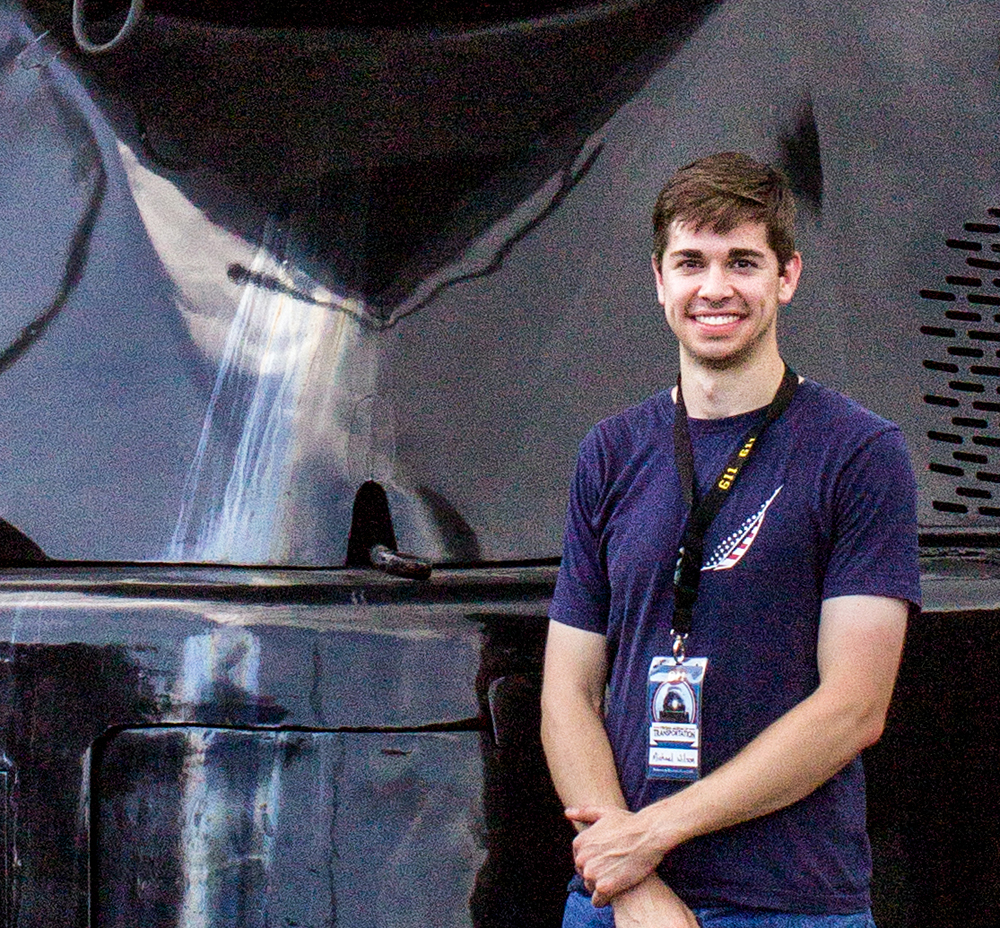By Michael J. McLaughlin
One of the most memorable aspects of my career in railroad maintenance of way is the “outfit.” An outfit was usually a collection of old revenue cars–both passenger and freight–converted to sleeping, cooking, shower, supply, tool, storage, and machinery transport use. An outfit could be one lone car for a signal helper assigned to follow a steel gang, or the multitude of cars belonging to the rail gang itself. Welders, communications gangs, machine operators, bridge-and-building gangs, water service, signal gangs, rail/tie/surfacing gangs, and anyone else required to be away from home during the work week had outfits. They ranged from the elegant, to the acceptable, to the barely passable, to unspeakable roach boxes. They were found alongside the main line, tucked away in yards, in the middle of cities, and at locations so remote that the railroad itself was the only access.
Generally speaking, signal-gang outfits were a cut above the ordinary. But they varied from railroad to railroad and gang to gang. Signal Gang 17 on the Great Northern had quarters that could only be described as elegant. The bunk car was a converted Pullman with a foreman’s office/bedroom at one end and individual bunks for the men with cupboards and footlockers, even reading lights. The kitchen car was another old passenger car with a dining area, propane stove and refrigerator, hot water heater, and cook’s quarters. The shower car was a more plebeian wooden ex-boxcar, but with two showers, coal stove/hot water heater, and lines for drying work clothes. These cars were painted two-tone green inside and were kept spotless.
The bunk and kitchen cars were heated by oil stoves, and all windows were screened against the Northwest’s flying-insect population. The kitchen car was equipped with serviceable heavy china and all the necessary pots, pans, cutlery, and silverware. Water for the outfit was provided by an old steam locomotive tender body mounted on a flatcar. Coal for the shower car was kept in the obvious location, while the opposite end of the flatcar extending beyond the tender had low sides for storing signal masts, ladders, and other paraphernalia. The balance of the outfit was several old wooden boxcars converted to tool and storage cars. Inside, workbenches, storage bins, and other conveniences were installed. Small windows were supplemented in the more important cars by connection to the bunk cars’ electrical system.
At the other end of the spectrum of GN outfits was a lone boxcar assigned to a signal helper following a steel gang. With a storage area at one end, the “living quarters” consisted of an army-surplus steel bunk, a coal stove, table and chair, a water can, an enamel wash basin, sink/cupboard without water, and nails driven into the wall for clothes hooks. Lighting was by kerosene lamps, or one long extension cord.
Signal Gang 3 on the Rio Grande was an “extra” gang with an appropriately “extra” outfit–a couple of typical tool/equipment/storage cars, and two living cars. The gang car was an old, small wooden boxcar converted by adding windows and replacing the boxcar doors with standard house-size doors. The interior was a series of double-deck, army-style bunks and a coal stove. Kerosene lamps provided lighting until an assistant signalman “wired” the car over a weekend. The other habitat was the foreman’s car, which contained an office, bedroom, and center area with coal stove/water heater, kitchen and shower, plus a dining table and benches. This was a more modern car, still wood-sided but with dreadnought steel ends. Access to the side doors was via portable wooden steps hung off the doorsills.
Signal Gang 2 on the Rio Grande was a “permanent” gang, and its outfit displayed a more substantial position in the signal department hierarchy. The bunk car was an ex-Army steel troop sleeper with “full cushion” trucks. The inside contained an also ex-Army, coal-fired space heater, shower stall, and several double-deck, government-surplus bunks. While the bunk car was only marginally superior to Gang 3’s accommodations, Gang 2 had a full-fledged kitchen car with a coal stove large enough to cook for a complete steel gang. Completing the amenities were sinks, a hot water tank, a refrigerator, and electrical wiring designed rather than added-on. Most winter nights the gang would sit at the dining table, playing cards, arguing and bitching about all past, present, and future grievances imposed upon them by an uncaring management. One of the tool cars usually held a fresh strung-up venison; life was at least acceptable in bunk cars along the Colorado River.
The Rock Island, in common with many other class 1 railroads, provided accommodations varying from “O.K.” to “Why did I take this job?” A dilapidated old bunk car and associated tool cars housed a signal gang in Kansas. Converted from a one-time first-class passenger car, the bunk car had fallen on hard times. The unprepossessing exterior was matched by the neglected interior, the occupants being interested only in the next long weekend. However, the big gang at Blue Island in Chicago had quarters that were cleaner and more organized–a product of “economy of scale.” When a gang has 23 members and a full-time cook, a flunky or two–“bull cooks”–can be justified to provide minimum domestic services. As the size of the gang degenerates to “crew,” then to “signalman and assistant,” the quarters also diminish to a marginal boxcar, and, finally, to a tiny trailer parked by a depot.
But elegant or disreputable, outfits have been disparaged–even reviled–by generations of railroaders, and simultaneously remembered as aesthetically unsurpassed living quarters. Time, season, and labors all color gang members’ recollections of their temporary domiciles, but few would trade their railroad habitats for a life that had never known moving day as a local switcher rather than a Mayflower moving van.
Learn more about railroad history by signing up for the Classic Trains e-mail newsletter. It’s a free monthly e-mail devoted to the golden years of railroading.













